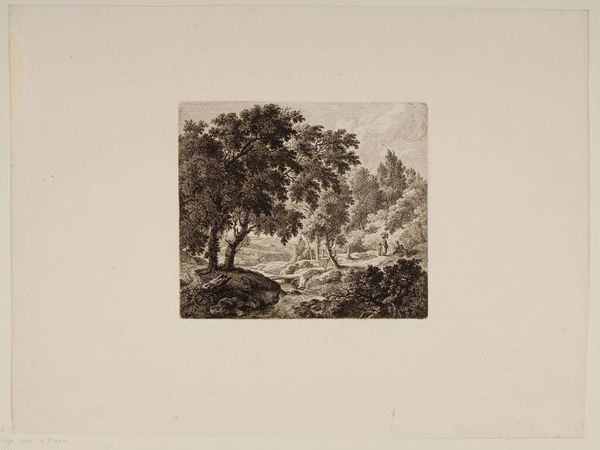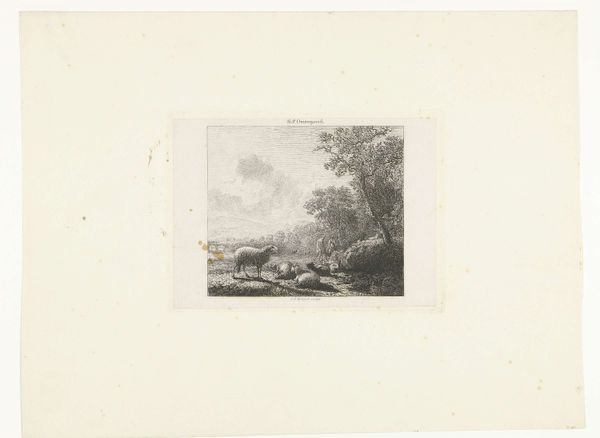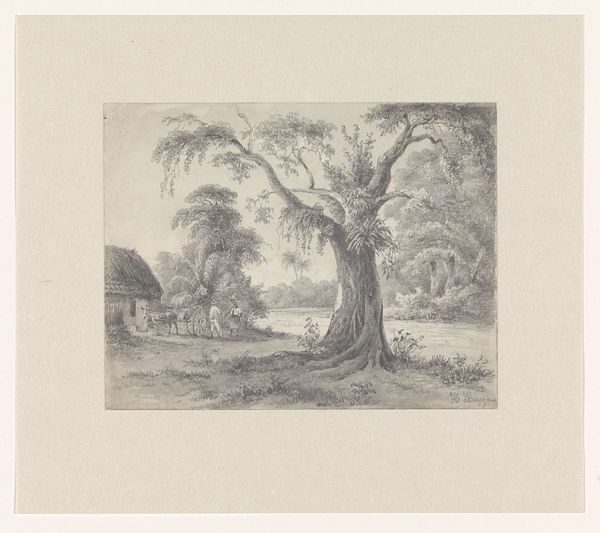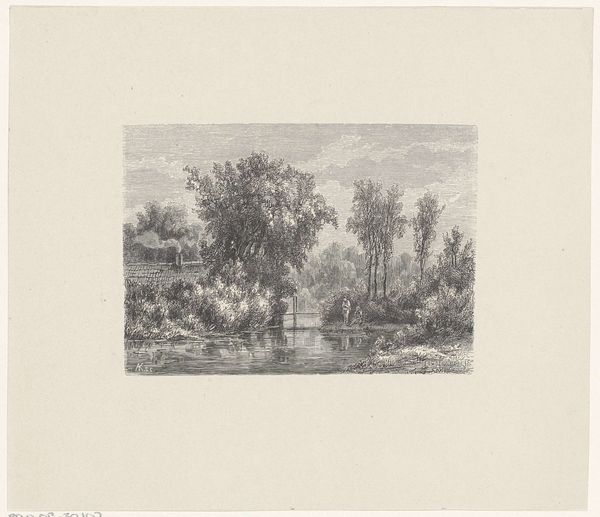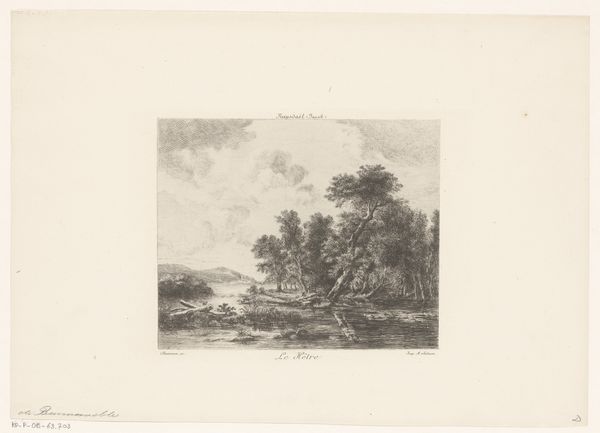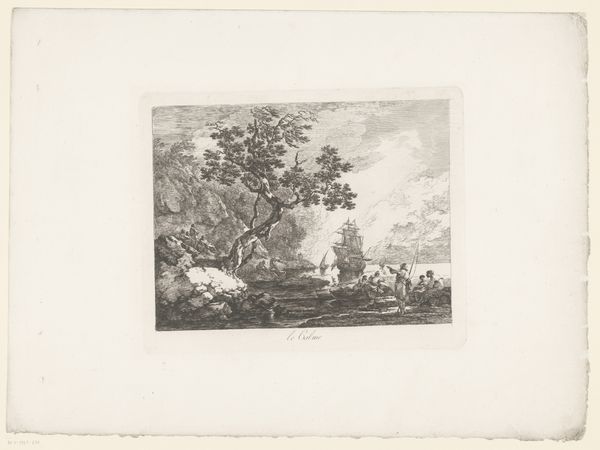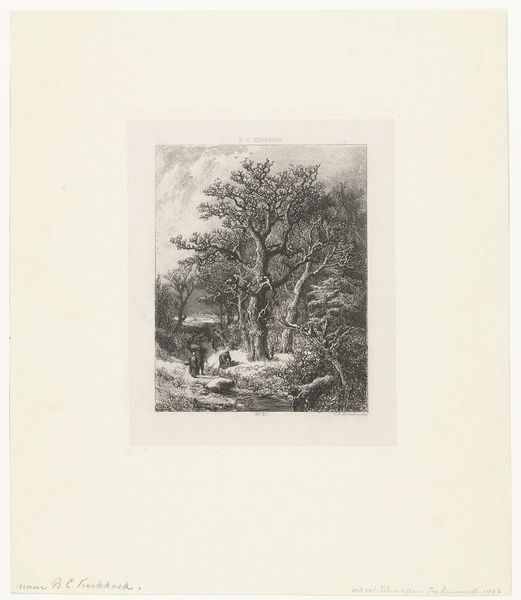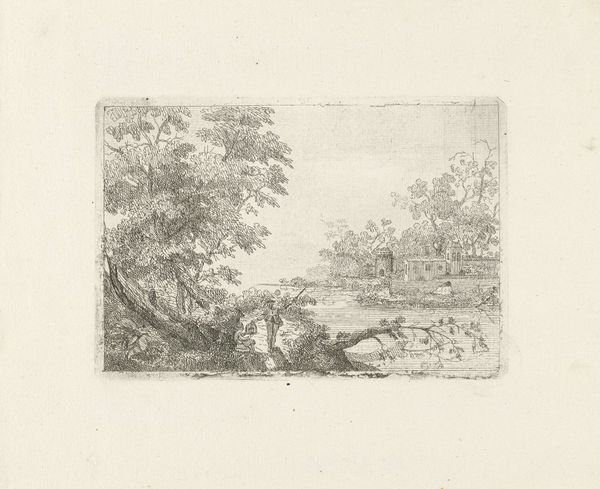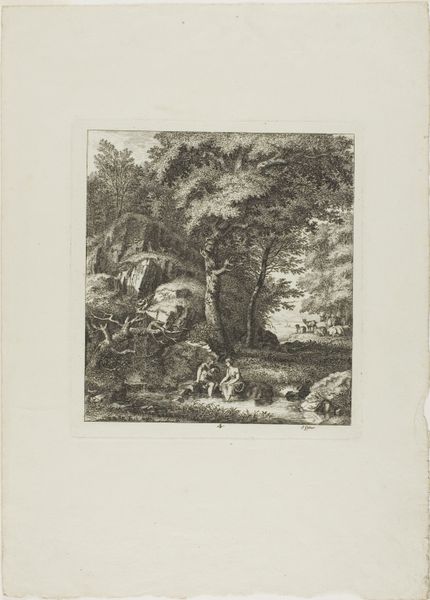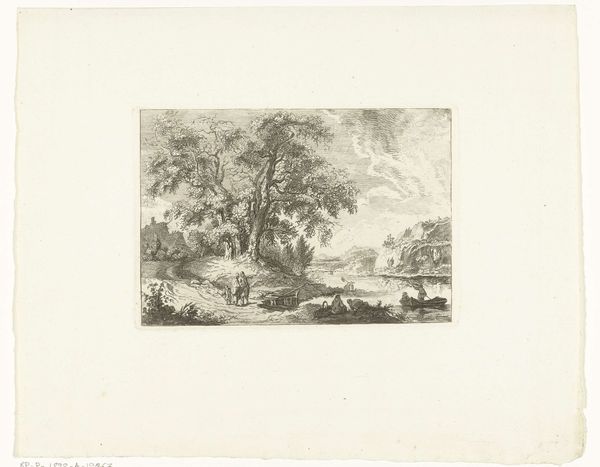
print, etching
#
dutch-golden-age
# print
#
etching
#
old engraving style
#
landscape
#
etching
#
realism
Dimensions: height 115 mm, width 155 mm
Copyright: Rijks Museum: Open Domain
Curator: Look at this tranquil scene. This is “Landscape with Cart Tracks and Cattle,” an etching created by Cornelis Ouboter van der Griendt, likely sometime between 1807 and 1868. It’s currently held here at the Rijksmuseum. Editor: The delicacy of the line work is striking; it almost vibrates with stillness. It really evokes a hushed sort of pastoral serenity. Curator: Indeed. Landscapes like this are key to understanding Dutch Golden Age aesthetics and, I’d argue, even extending into later explorations of Realism. Consider how such images naturalize land ownership and rural labor practices through seemingly objective representations. Editor: That's interesting. I am seeing more now. How does that intersectional analysis inform your reading of the relationship between the figures, the land, and the implied viewer? Is the peasant woman depicted actually empowered or merely ornamental, contributing towards romanticism or exoticism? Curator: Well, by placing the small female figure and the cattle on the lane in the middle-ground and almost diminishing them with size and placing of trees either side of them on the lane implies to me that it perpetuates dominant patriarchal and capitalist structures by presenting this scene of everyday life as harmonious. The woman tending to cattle on the cart tracks may normalise such work. Editor: That brings the discussion back to the role of museums in exhibiting such pieces, doesn't it? To question not just artistic merit, but whose stories are told and how, as museums solidify such historic narratives. What power does that dynamic yield, and do they take into consideration their impact on how viewers interpret this artwork today? Curator: Precisely. Museums like the Rijksmuseum are complicit to shaping public perceptions, even of historical material. Exhibitions must become opportunities for critical engagement. Editor: It’s an evocative reminder that, even within idyllic settings, we need to constantly examine the interplay of socio-economic elements and how we view historic artwork to have a real understanding and appreciation of its existence and relevance. Curator: An important caveat for enjoying a quiet moment with an etching from the Dutch countryside, absolutely.
Comments
No comments
Be the first to comment and join the conversation on the ultimate creative platform.
